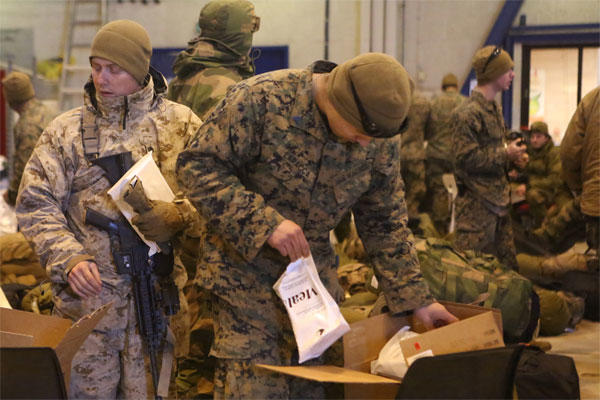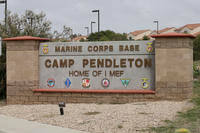ELVEGAARDSMOEN, Norway – When Marines in the field are hungry, they turn to brown packages with snacks and dehydrated entrees inside. Meals, Ready to Eat have been staples of field life in the military since they replaced Meals, Combat Issue in 1981.
For service members in cold environments, however, regular MREs aren’t enough. MREs can only withstand low temperatures to a certain point. After that, service members require something most have never seen: Meals, Cold Weather.
Clad in white instead of the usual brown packaging, MCWs contain meals with more calories and additional drink mixes to encourage hydration in climates that require more energy per day, but where many people prefer not to drink.
For men and women who fight in every clime and place, the frigid environment of the arctic weather during Cold Response 14, a Norwegian-led multinational exercise, is one such location.
“[MCWs] are better than regular MREs, they just aren’t as expedient,” said Marine Corps Sgt. Sean N. Davis, a Bowling Green, Ohio, native and food service specialist with the battalion. “They last longer and they won’t freeze in the cold, but you need to boil water.”
The MCWs are similar in some respects to the field rations, or FRs, used by the Norwegian armed forces such as the high calorie count and the water requirement for rehydrating the entree in each meal.
“FRs are pretty much the same as the [MCWs],” said Sgt. Ole G. Tinghaug, an Arendal, Norway, native and ambulance team leader with Host Nation Support Battalion. “They come linked together with breakfast, lunch and dinner, though. It’s the same concept, but with different food. MCWs are bigger, with more food in them, and I like those.”
Cold Response 14 brought together nearly 16,000 service members from 16 different nations in northern Norway, above the Arctic Circle, from March 10-21 to build allied military capacity and interoperability in a high-intensity, cold-weather training environment.




























